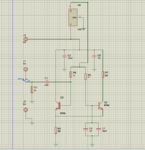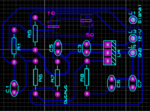Johnny101
Member level 1
Hello everyone I am trying to built a discrete transistor amplifier using 2N3904 npn transistor. I am trying to achieve a 4Vpp output with 0.7Vpp (Sinusoid) input with a bandwidth of 120 MHz.
The amplifier that I have designed meets my requirement when simulated in Proteus but when implemented on PCB the gain starts to roll off after 1MHz. Any help would be appreciated.
The amplifier that I have designed meets my requirement when simulated in Proteus but when implemented on PCB the gain starts to roll off after 1MHz. Any help would be appreciated.

